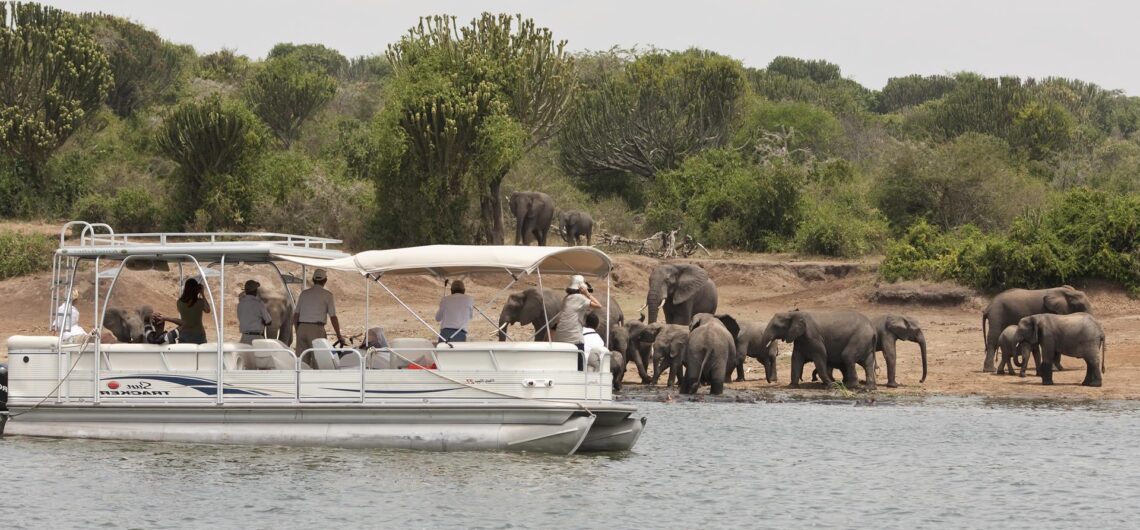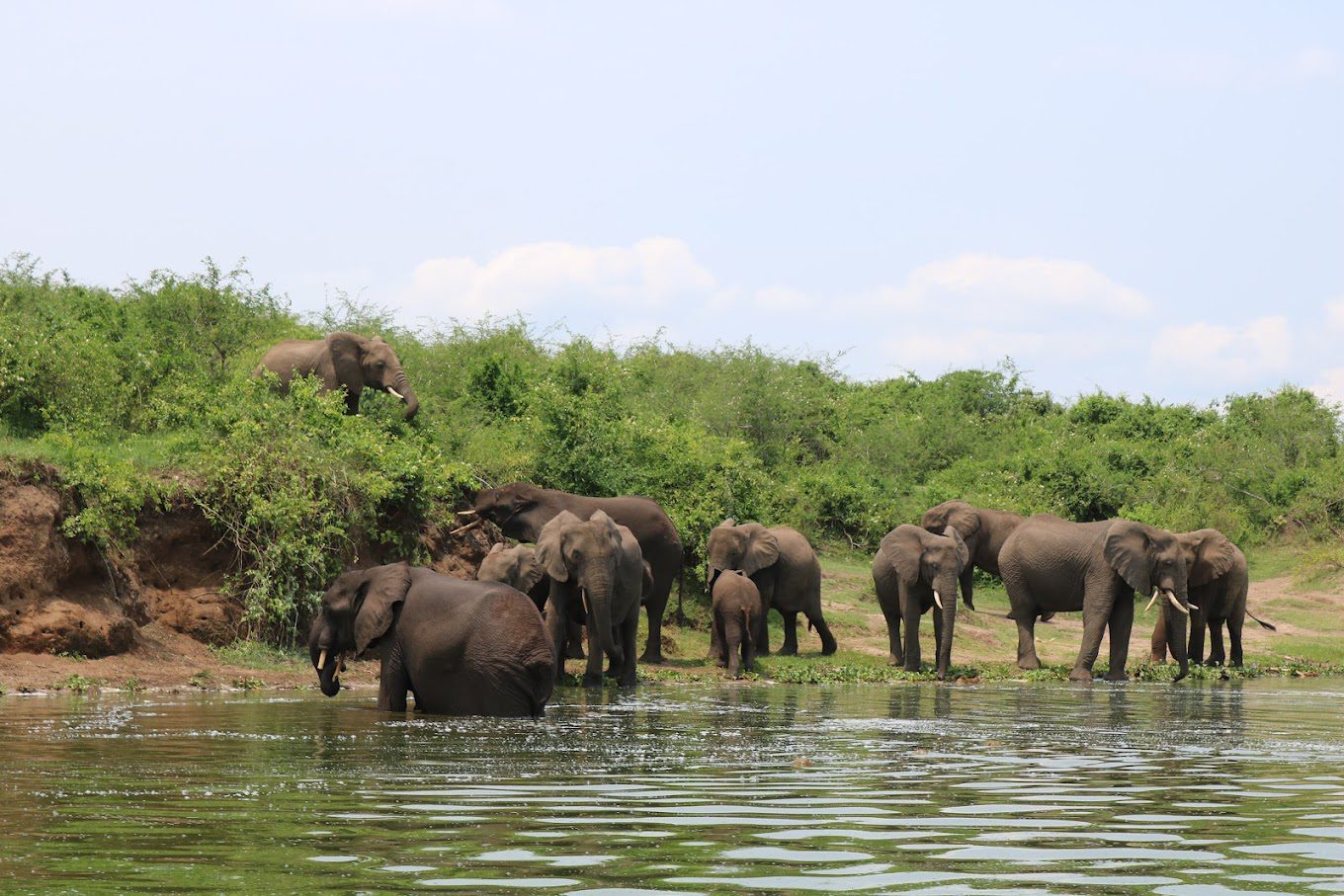Exploring the Majestic Kazinga Channel: A Thriving Wildlife Haven in Uganda
The Kazinga Channel is a significant geographical and ecological feature in Uganda, situated within Queen Elizabeth National Park, one of the country’s most renowned national parks. This natural channel is approximately 32 kilometers (about 20 miles) long, connecting two of Uganda’s great lakes: Lake Edward and Lake George. The channel is known for its exceptional biodiversity, making it a prime destination for wildlife enthusiasts, bird watchers, and eco-tourists. In this detailed overview, we will explore the geographical, ecological, historical, and touristic aspects of the Kazinga Channel.
Geographical Location and Description
The Kazinga Channel lies in the southwestern part of Uganda, within the boundaries of Queen Elizabeth National Park. The park itself is located in the Albertine Rift Valley, a branch of the Great Rift Valley, and is one of Uganda’s most diverse ecosystems. Lake George, located to the northeast of the channel, is relatively shallow and fed by streams from the Rwenzori Mountains. Lake Edward, to the southwest, is larger and deeper. The Kazinga Channel acts as a natural link between these two lakes, facilitating the movement of water and aquatic life.
The channel’s width varies along its length, but it generally offers a broad, calm expanse of water, surrounded by lush vegetation and savannah landscapes. This region’s landscape includes both open grasslands and thickly forested areas, providing diverse habitats for various species.
Ecological Significance
The Kazinga Channel is renowned for its rich biodiversity, particularly its abundance of wildlife. It serves as a critical water source for animals in Queen Elizabeth National Park, especially during the dry season. The banks of the channel are frequented by a variety of mammals, reptiles, and bird species, making it a vibrant ecosystem with a dynamic interaction between land and aquatic life.
Wildlife
The Kazinga Channel is home to one of the largest concentrations of hippos in the world. Thousands of hippos can be seen wallowing in the water, creating a spectacular sight for visitors. Nile crocodiles are also a common sight in the channel, basking on the banks or stealthily gliding through the water. These reptiles, once nearly extinct in the area, have made a significant comeback since the creation of the national park.
Elephants frequently visit the channel to drink, bathe, and cool off from the heat. Large herds of buffalo are also a common sight, often seen mingling with other herbivores like antelopes, waterbucks, and Uganda kobs. Predators like lions and leopards are occasionally spotted near the channel, especially during the early morning or late evening hours when they come to hunt or drink.
Birdlife
The Kazinga Channel is a bird-watcher’s paradise, hosting over 600 species of birds. The diversity is partly due to the variety of habitats surrounding the channel, including swamps, open water, forests, and savannahs. Some of the notable bird species include the African fish eagle, pied kingfisher, pelicans, African skimmer, and a variety of herons and storks. Migratory birds also frequent the channel, making it a crucial stopover point for species traveling from Europe to Africa.
Hydrological Importance
The channel plays a vital role in regulating the water levels of Lake Edward and Lake George. It allows for a controlled flow of water between the lakes, maintaining ecological balance in the region. Lake George receives most of its water from the surrounding rivers and streams, primarily originating from the Rwenzori Mountains, while the Kazinga Channel drains this water into Lake Edward. This interconnected system supports a wide array of aquatic life and maintains the health of the broader ecosystem.
Historical Background
The history of the Kazinga Channel and its surrounding area is closely tied to the local communities and their interaction with nature. Before the establishment of Queen Elizabeth National Park in 1952, the area around the channel was inhabited by local tribes who relied on fishing, agriculture, and cattle rearing. The creation of the park led to the displacement of some communities, but it also opened up opportunities for conservation and tourism.
The channel was originally named “Kazinga” by the local Basongora people, who lived in the region and used the channel for fishing and water for their livestock. The establishment of the national park and the introduction of conservation policies were crucial in protecting the region’s wildlife, which was under threat due to poaching and habitat destruction.
Tourism and Activities
Tourism is one of the major activities at the Kazinga Channel, with boat safaris being the most popular way to experience the channel’s wildlife and scenic beauty. These guided boat tours offer visitors a close-up view of the diverse animal and bird species in their natural habitats. The boat rides typically last two to three hours, providing ample time for photography and observation.
Boat Safaris
Boat safaris along the Kazinga Channel offer some of the best wildlife viewing experiences in East Africa. Visitors can see hippos up close, observe crocodiles sunbathing on the shores, and watch herds of elephants and buffaloes as they come to the water’s edge to drink. The birdlife along the channel is also a highlight, with opportunities to spot both resident and migratory species.
These boat trips are usually conducted by experienced guides who provide insights into the channel’s ecosystem, the behavior of animals, and the identification of bird species. The best time for a boat safari is usually in the late afternoon or early morning when animals are most active.
Fishing
Fishing is another activity that visitors can enjoy on the Kazinga Channel, although it is regulated to ensure sustainability. Local communities often engage in fishing as a means of livelihood, catching fish species like tilapia and catfish. Tourists interested in fishing can arrange excursions with local operators, providing a more immersive experience in the local culture and lifestyle.
Conservation Challenges
Despite its beauty and biodiversity, the Kazinga Channel faces several conservation challenges. Human-wildlife conflict is a significant issue, especially as communities around Queen Elizabeth National Park grow and expand their agricultural activities. Crocodiles and hippos sometimes stray into local farmlands, leading to confrontations with people.
Pollution from nearby settlements and agricultural runoff also poses a threat to the water quality of the channel. The increased use of chemical fertilizers and pesticides in agriculture can lead to eutrophication, affecting the health of aquatic ecosystems. Efforts are ongoing to address these challenges through community-based conservation programs and environmental education.
Community Involvement and Ecotourism
Local communities play a crucial role in the conservation and sustainable management of the Kazinga Channel. Ecotourism initiatives have been developed to involve these communities in tourism activities, providing them with alternative sources of income. Programs such as guided cultural tours, handicraft sales, and homestay experiences have been implemented to benefit the local population economically.
The Uganda Wildlife Authority (UWA) works with these communities to promote sustainable practices and to reduce human-wildlife conflict. Revenue from tourism is often reinvested in community projects, including schools, health centers, and infrastructure development, fostering a positive relationship between conservation efforts and local livelihoods.
Conclusion
The Kazinga Channel is more than just a waterway; it is a vital lifeline for the wildlife of Queen Elizabeth National Park and a key element of Uganda’s natural heritage. Its unique ecosystem supports an extraordinary variety of species, making it one of the most biodiverse regions in East Africa. The channel’s significance extends beyond its ecological value, as it also plays a crucial role in local culture, economy, and conservation.
The future of the Kazinga Channel depends on continued conservation efforts, sustainable tourism practices, and the involvement of local communities. Protecting this natural treasure will ensure that its rich biodiversity and scenic beauty remain intact for future generations to enjoy, making the Kazinga Channel a true jewel of Uganda’s landscape.



Comments